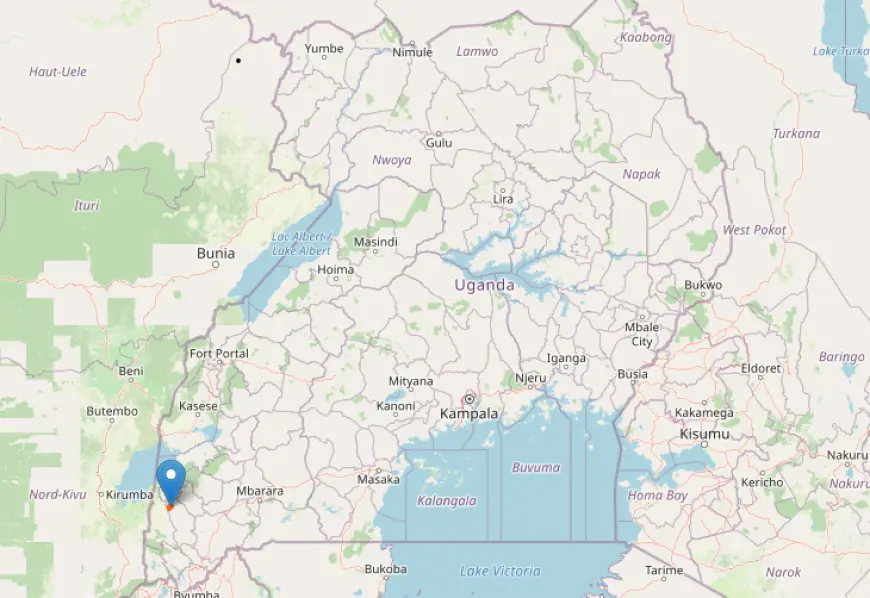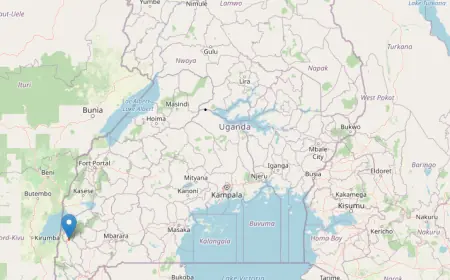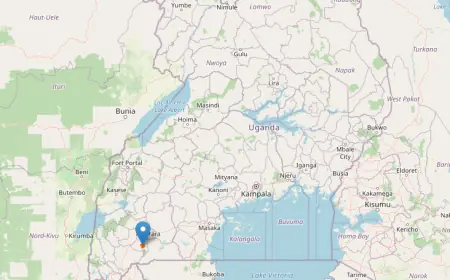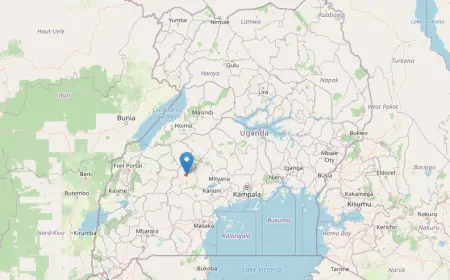Ihimbo Central Forest Reserve
This forest reserve is not only a beautiful natural attraction, but also a source of medicinal plants, cultural heritage, and biodiversity conservation.

Imagine walking through a lush green forest, surrounded by the sounds of birds, monkeys, and insects. You feel the cool breeze on your skin and smell the fresh aroma of the plants. You are in Ihimbo Central Forest Reserve, one of the protected forest reserves in Uganda, located in Rukungiri district. This forest reserve is not only a beautiful natural attraction but also a source of medicinal plants, cultural heritage, and biodiversity conservation. In this article, we will explore the history, features, and challenges of Ihimbo Central Forest Reserve and why it deserves more attention and protection.
History of Ihimbo Central Forest Reserve
Ihimbo Central Forest Reserve was gazetted in 1965 as part of the national effort to conserve the forest resources of Uganda The forest reserve covers a total area of 4.77 km2 and is situated near the villages of Bwambara and Kikongi The forest reserve is managed by the National Forestry Authority (NFA), which is mandated to oversee all 506 Central Forest Reserves in Uganda
The forest reserve is home to various ethnic groups, such as the Banyankole, Bakiga, and Banyarwanda, who speak Runyankole/Kiga as their common language These communities have a long history of using the forest for their livelihoods, such as collecting firewood, hunting, and harvesting medicinal plants. They also have a rich cultural heritage, such as myths, legends, and rituals associated with the forest. For example, there is a belief that the forest is inhabited by spirits who can grant blessings or curses to the people
Features of Ihimbo Central Forest Reserve
Ihimbo Central Forest Reserve is a biodiversity hotspot, hosting a variety of flora and fauna. The forest is composed of moist semi-deciduous trees, such as mahogany, mvule, and ebony, as well as forest plantations of pine and eucalyptus The forest is also endowed with natural herbs that have medicinal properties, such as Asteraceae, Fabaceae, Solanaceae, Lamiaceae, Poaceae, and Eurphobiaceae These plants are used by the local communities to treat various ailments, such as malaria, coughs, wounds, and stomach problems
The forest is also a habitat for many wildlife species, such as red-tailed, black-and-white, and green-jet monkeys, bush pigs, duikers, and porcupines The forest is also a birdwatcher’s paradise, with over 100 bird species recorded, such as the African grey parrot, the great blue turaco, the Ross’s turaco, and the crowned hornbill The forest also hosts many butterflies, moths, and insects, adding to the beauty and diversity of the ecosystem
One of the most attractive features of Ihimbo Central Forest Reserve is the Ihimba hot springs, which are located in the forest. The hot springs are believed to have healing powers and attract many visitors who come to bathe in the warm water. The hot springs are also a source of geothermal energy, which could be harnessed for electricity generation.
Challenges of Ihimbo Central Forest Reserve
Despite its importance and potential, Ihimbo Central Forest Reserve faces many threats and challenges, mainly from human activities. According to a study conducted by Mbarara University for Science and Technology, the main challenges facing the forest reserve are:
- Destruction for farmland: The forest reserve is surrounded by agricultural land, and many people clear the forest for cultivation, especially of crops such as maize, beans, and bananas. This reduces the forest cover and degrades the soil quality
- Poaching: The forest reserve is a target for poachers, who hunt the wildlife for bushmeat, skins, and horns. This reduces the population and diversity of the animals and disrupts the ecological balance
- Encroachment: The forest reserve is encroached upon by human settlements, which build houses, roads, and fences within the forest boundaries. This reduces the forest area and fragments the habitat.
- Illegal extraction of park resources: The forest reserve is exploited by illegal loggers, who cut down the trees for timber, charcoal, and firewood. This reduces forest biomass and carbon sequestration
- Political pressure to de-gazette park land: The forest reserve is under pressure from some politicians and local leaders who want to de-gazette or change the land use of the forest reserve for other purposes, such as mining, tourism, or development. This undermines the legal status and protection of the forest reserve
These challenges pose a serious threat to the sustainability and conservation of the Ihimbo Central Forest Reserve and require urgent and collective action from all stakeholders, such as the government, the NFA, the local communities, civil society, and the private sector.
Conclusion
Ihimbo Central Forest Reserve is a hidden treasure of Uganda, with a rich history, features, and challenges. The forest reserve is a source of natural beauty, medicinal plants, cultural heritage, and biodiversity conservation. However, the forest reserve is also facing many threats and challenges, mainly from human activities such as deforestation, poaching, encroachment, illegal extraction, and political pressure. These challenges need to be addressed and resolved in order to preserve and protect the forest reserve for present and future generations. Ihimbo Central Forest Reserve deserves more attention and protection, as it is a valuable asset and resource for Uganda and the world.
What's Your Reaction?
 Like
0
Like
0
 Dislike
0
Dislike
0
 Love
0
Love
0
 Funny
0
Funny
0
 Angry
0
Angry
0
 Sad
0
Sad
0
 Wow
0
Wow
0













































































